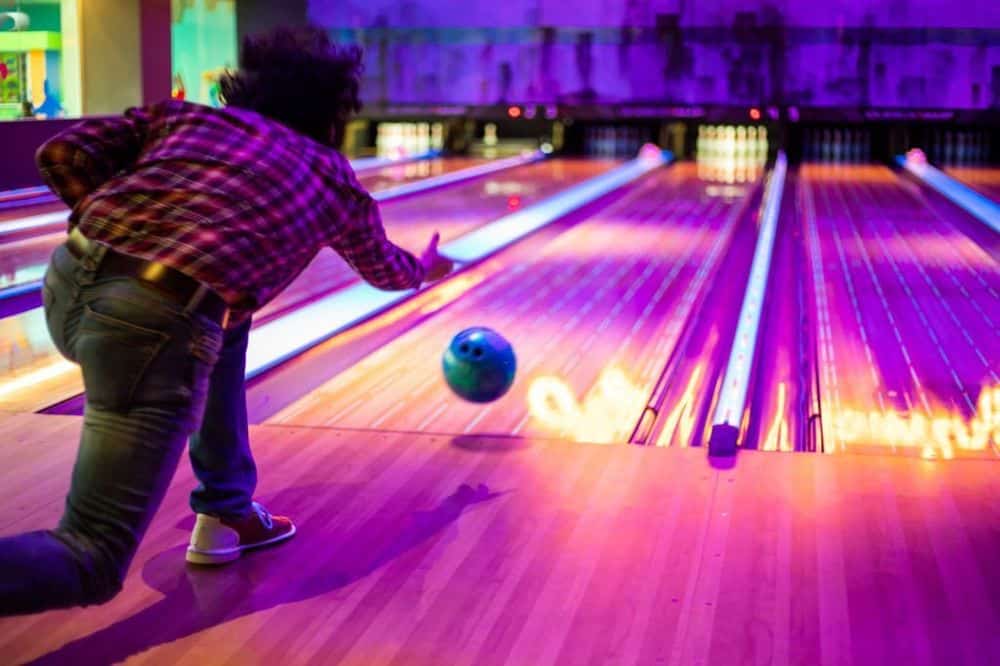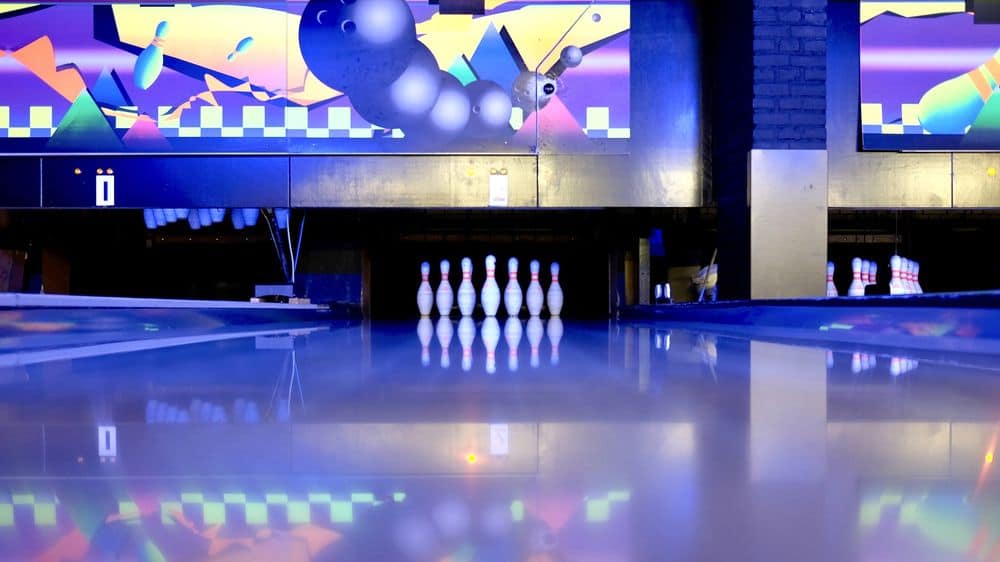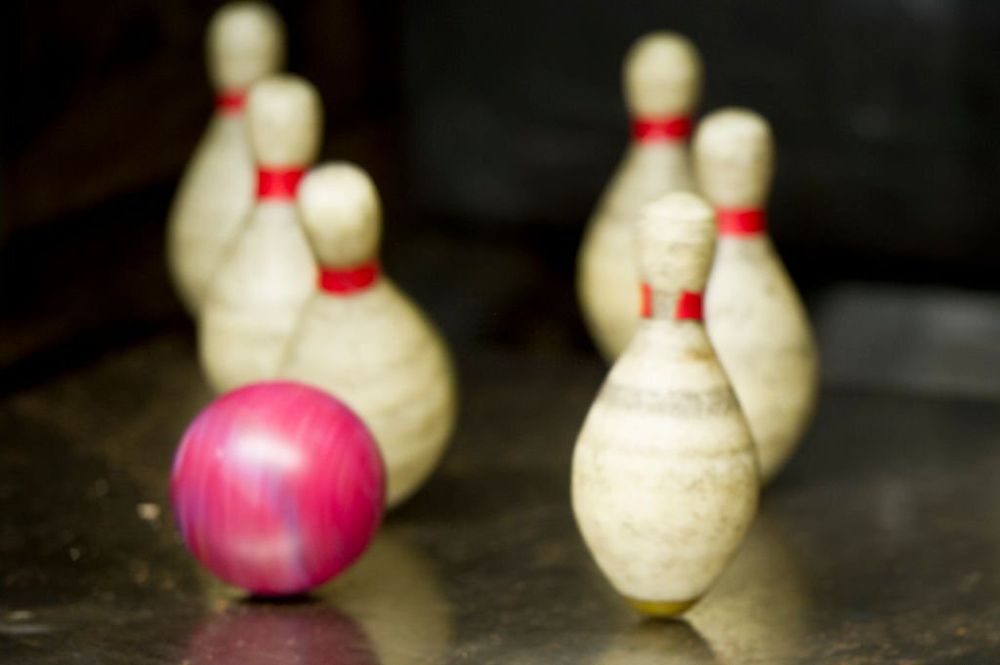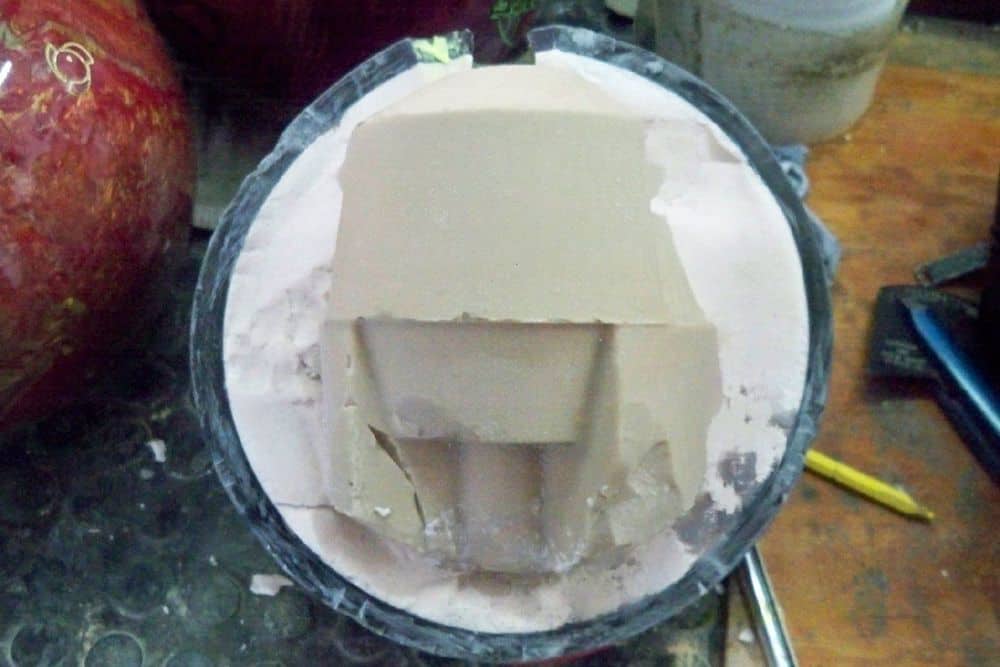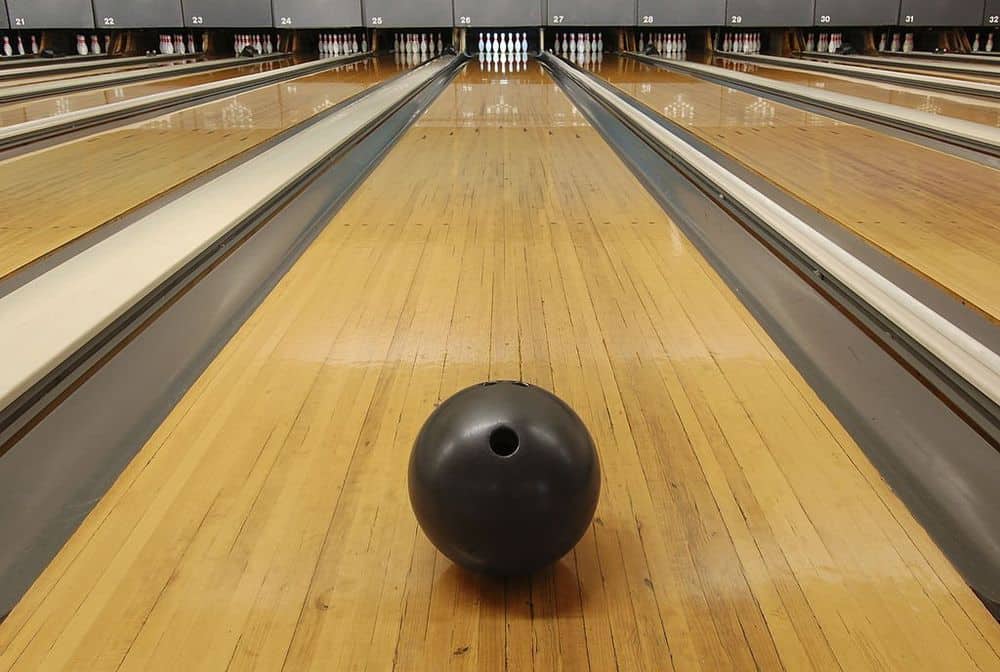Bowling alleys are typically built out of wood or synthetic materials, which are exceptionally robust and long-lasting.
Well-built bowling lanes last for years, remain dent-free despite heavy bowling balls and withstand regular use.
The lanes are completed with layers of an oil-based solution, usually polyurethane, in addition to the materials mentioned above.
The bowling alley’s surface is improved by the oil, which not only makes it sleeker and smoother but also makes it more durable and resistant to denting.
What’s the reason for bowling balls not breaking the floor?
Bowling lanes are highly resilient and hard to dent because they are constructed from wood or synthetic materials.
In addition to these components, the lanes are finished with oil-based solutions, typically polyurethane.
The oil makes the bowling lane’s surface sleek and shiny while making it more robust and dent-resistant.
Bowling alleys typically have maple floors because maple is a dense and hardwood material that can withstand high foot traffic.
The native walnut tree is also prevalent because of its dense and difficult-to-dent wood.
Synthetic materials are used in today’s bowling alleys, and you can now choose from various options that are both affordable and require little maintenance.
In the construction of most lanes, maple is used at the point where the ball makes contact, while pine is used at other points.
What are bowling lanes made of?
Both maple and pine are standard in the construction of bowling lanes.
Care to position these components in the appropriate areas for maximum efficiency and longevity when putting together the lanes.
Maple and pine
The first twelve feet of the lane and the area closest to the pin deck are constructed of maple, while the middle sections of the lane are made of pine.
Maple is used for the lanes’ front and back parts because it is more robust and can withstand the ball’s impact, even when thrown with more force.
The fact that it can withstand shocks makes it ideal for the sport of bowling.
In addition, it holds up better to the routine maintenance of sanding and finishing.
Pine is commonly used for the middle of the lane because it is softer but sturdy enough to support a bowling ball.
It allows the ball more freedom of motion and interaction with the lanes as it descends towards the pins.
Furthermore, pine is not susceptible to drying out or rotting.
Synthetic
Nowadays, most lanes are fabricated from synthetic materials designed to resemble wood.
In addition, they are constructed from robust composite materials that have been extensively reinforced.
The material’s smoothness makes it easier for balls to roll and reduces the amount of maintenance and oil needed.
As a result, synthetic lanes are less expensive to install because they require less oil.
Bowling alleys now commonly use synthetic surfaces, which are more durable than their wooden predecessors.
However, to ensure that gameplay is not compromised, the manufacturing process for the bowling balls has had to change to match the surface.
The use of oil-based treatments
Wood lanes are finished and protected by applying a coat of oil-based material, such as polyurethane after they are assembled.
It works wonderfully to fortify and polish the surface.
In addition, the finish prevents the wood from being damaged by the ball and minimizes denting issues.
How hard are bowling alley floors?
The floors of bowling alleys are typically made of a more durable and dense variety of maple.
The native walnut used is not only long-lasting but also very dent-resistant.
However, such wood is not entirely dent-proof but does resist impressions to some degree.
How thick is a bowling alley floor?
Pine and maple are typically used to construct bowling lanes 60 feet long and 42 inches wide.
In this proportion, maple accounts for 22 feet and pine for 41 feet.
The lanes are typically laminated to two inches as an added safety measure.
How are bowling lanes so durable?
Bowling lanes are made of durable materials that can withstand the force of the ball.
Regular upkeep and repair work is necessary to reduce the wear and tear on these lanes over time.
To ensure the wood is finished correctly and is durable, oil or conditioner (often polyurethane) is applied after the lane has been laid.
Most modern lane conditioners are made from mineral-type oils and contain additives to alter friction and lubricate the surface.
These are essential to keep the lanes in good condition and lessen the damage from the balls.
The conditioners maintain the lanes’ resilience, resulting in smoother ball rolls and less wear and tear on the lane.
Lanes in modern bowling alleys are typically made of synthetic materials that look like wood.
These materials are typically more sturdy and resilient than the traditional maple and pine lanes.
Less time and money are spent on upkeep and oil changes for the synthetic lanes.
This is because the surface is already more suitable for the smooth rolling of bowling balls.
The lower maintenance requirements of synthetic lanes also make them less expensive.
How do bowling lanes not get dented?
Bowling lanes are constructed from high-quality wood that is dent-resistant.
Maple or hardwood is a common choice for building bowling lanes.
Bowling lanes made from this dense, dent-resistant wood last for many seasons with minimal maintenance.
Most bowling alleys have their lanes resurfaced every ten to fifteen years to keep them looking brand new.
Bowling balls can skid and deviate from their intended path if the lane is dented.
This is because a dent in the lane makes the floor uneven, which in turn affects how the ball rolls.
The ball’s speed is reduced because of the indentations’ ability to increase drag.
Using lane oils and conditioners can also improve the speed and trajectory of the bowling ball.
The layer of material that separates the bowling ball from the playing surface serves two purposes: it prevents the ball from being dented, and it controls how the ball rolls.
What prevents a bowling lane from warping?
Bowling alleys can look and function like new ones for much longer if they resurface every ten years.
Bowling alleys have been oiling their lanes to preserve them for a long time.
This method prevents the wood from being severely warped by bowling balls.
Even though most lanes you’ll encounter will be synthetic, You will still do conditioning in essentially the same way.
The oil makes the lane slicker, decreasing the ball’s ability to hook.
Another major factor in bowling lanes not denting is the type of wood used.
Alleys made of wood are typically constructed from maple and pine.
Since it is strong, maple is used at the front and back to withstand the impact of balls landing on it after release and the pounding of pins against the back end.
Pine is used in the lane’s center because it is durable and pliable, allowing bowlers more room to move around the lane as the ball interacts with the softer wood.
In contrast, wooden lanes deteriorate over time, and it gets more expensive to keep them in bowl-able condition as they age.
Synthetic tracks are gaining popularity.
They are typically easier to maintain and condition, and while they are more complicated than wooden lanes, modern bowling balls make this less of a problem.
How to fix a bowling alley?
Usually, when fixing a bowling alley, the lanes get sanded down to bare wood and given a fresh finish coat.
After completing that, the lanes are given a base coat and a finish coat.
Another option is re-coating, which involves applying an additional layer of finish or a clear coat over the previously applied one.
Lane Cleaning
Lanes of wood or synthetic materials are dusted and cleaned.
Every day, before the start of business and in the evening, the facility is given a thorough dusting.
Approach cleaning
When the floor is cleaned in this way, not only are shoe marks erased, but so are spills, dust, and any liquid drops.
The approach area attracts every dirt and stain that a quick wipe-down can remove.
It’s best to do this kind of cleaning before and after a league bowling game rather than in the middle when there’s a greater chance of the floor becoming slippery.
Lane stripping
You should do this every week on the same day.
It’s essential that the stripping is uniform.
Wood can be harmed by cleaning solutions left on for too long.
Cleaning the floor in lanes allows for faster, more thorough cleaning with no risk to the floor’s finish.
Conditioning of the lanes
This can be done automatically by a conditioning machine or manually by trained personnel.
For example, bowling alley lanes need lane conditioning to prevent damage to the floor from the friction of the bowling balls.
To achieve the best possible results from lane conditioning, using the appropriate amount of product is essential.
In addition, lane conditioning is a cost-effective alternative to resurfacing or re-coating bowling alleys that have seen better days.
Frequent lane conditioning has the potential downside of oil penetrating the inner wood, lowering the quality and making the lanes more vulnerable to damage in the long run.
The pin deck’s durability and appearance will benefit from a clear urethane coating.
The coating can be done as often as three times a year.
The bowling alley should be untouched for at least six to eight hours after coating.
Repairs
It’s best to look for signs of damage before they worsen, as they will appear eventually.
If not annually, there needs to be a checkup at least every two years.
After that, damaged spots, such as chips and rough spots, are smoothed out.
The bowling alley will run more efficiently by fixing problems, saving its owners money.
Bowling alley owners are switching from wood to synthetic flooring because it requires less upkeep and can be cleaned with everyday household products.
No more sanding is needed to keep the alley in good condition for years.
As a result, owners feel less pressure to do the routine maintenance necessary to keep things running smoothly.
Conclusion
Synthetic materials may prove preferable to wooden ones in the long run, as they require less upkeep and tend to be more rigid and more durable, with some of the newest options also being more eco-friendly.
Synthetic materials may also be less prone to dings and dents, reducing the need for costly repairs.
While a bowling ball can cause some damage to the surface, both of these materials are robust enough to withstand the weight and impact of a bowling ball without suffering significant damage.
In addition, bowling lanes are kept in good condition with the help of oil treatments and conditioners, which reduces the number of dents caused by the ball and extends its life.

